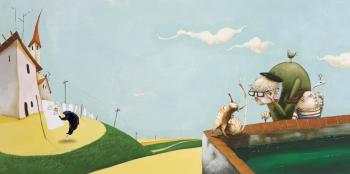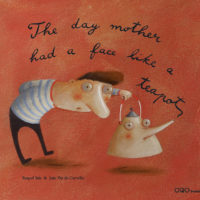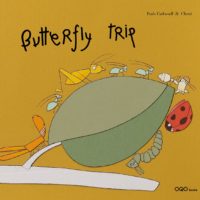The silly nanny goat
Pep Bruno & Roger Olmos
13,50€
- Páginas 36 pages
- Encuadernación hardback
- Medidas 25x23 cm
- Publicación September 2007
After looking all over the village, Miguel found his nanny goat on a roof top. “Does she think she’s a weather vane? Does she think she’s a chimney? Perhaps a cat? Miguel asked himself. With the help of a few flowers, a story book and a handfull of salt (nanny goats like salt more than children like ice cream), the silly nanny goat went back to where it belonged. The writer tells us, remembering his childhood, that in the village there were two or three nanny goats to a house.
More info





